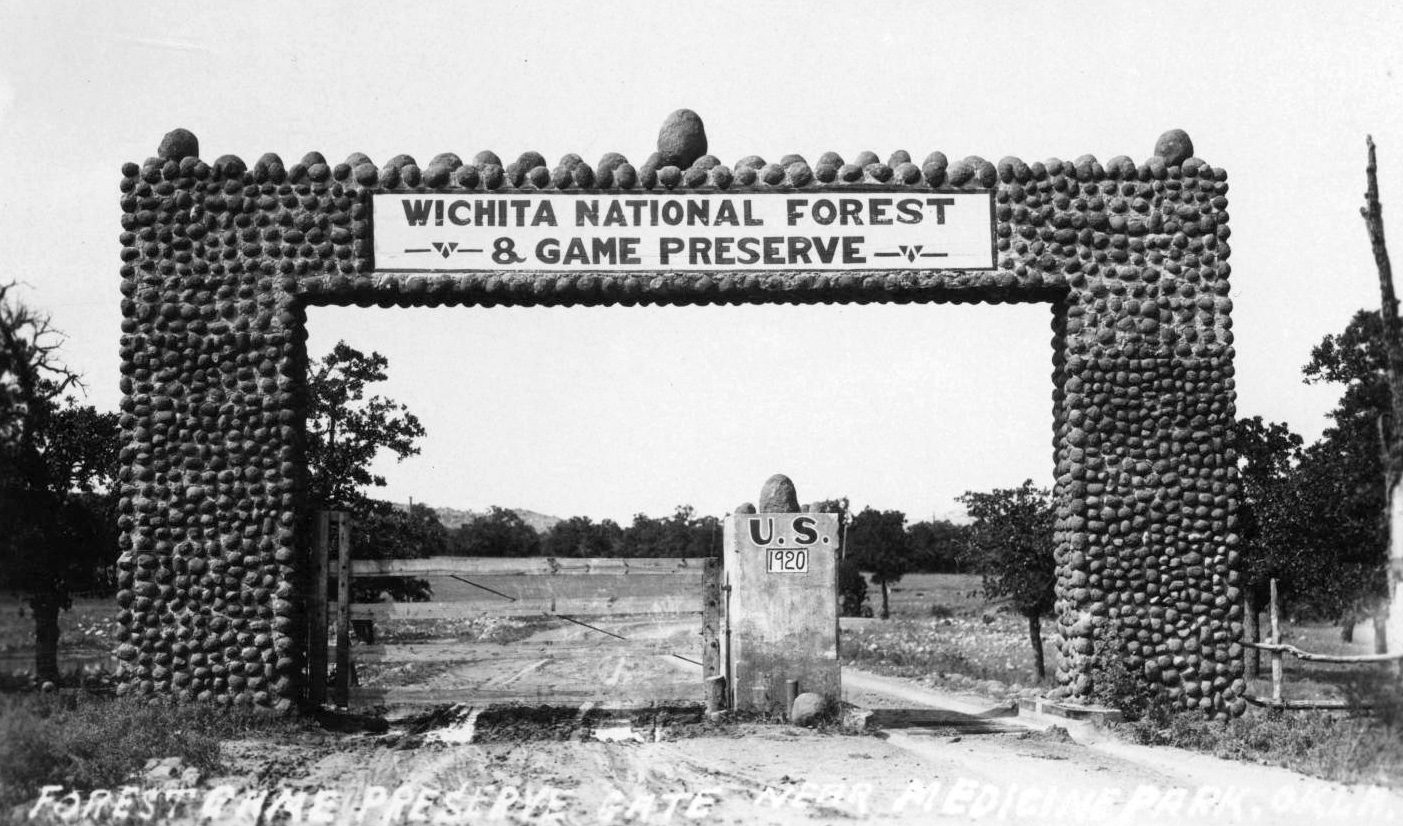The Encyclopedia of Oklahoma History and Culture
CANNONBALL ARCHITECTURE.
In 1911 a marker made of small, round, pink granite cobblestones was placed to recognize the first parade grounds at Fort Sill, north of Lawton. During the same year Boulder Cabin, constructed with the same materials, was erected in the present Wichita Mountains Wildlife Refuge. Three years later the hotel at nearby Medicine Park was built using the rounded cobbles, or river rock. Thus began the legacy of cannonball architecture in the Wichita Mountains area. Through the 1910s and 1920s soon-to-be senator Elmer Thomas spearheaded the building of Medicine Park resort, replete with cobblestone cabins, public buildings, and recreational facilities.
By the 1930s the Civilian Conservation Corps adopted this architecture, erecting nearly a dozen buildings on the refuge. Cobblestone buildings sprang up to the north and west, including the old Victory schoolhouse and the O'Pry grocery building, and similar buildings appeared on numerous farms and ranches in the Slick Hills. Through the 1970s and 1980s many of these fell into disrepair. By the 1990s the renowned architecture had become a magnet for community and landscape revitalization in Medicine Park and the surrounding area, indicating its uniqueness in southwestern Oklahoma and its important place in the state's landscape.
See Also
Bibliography
Peter J. McCormick, "River Rock Resort: Medicine Park's Landscape and Wichita Mountain Vernacular Architecture," The Chronicles of Oklahoma 75 (Fall 1997).
Citation
The following (as per The Chicago Manual of Style, 17th edition) is the preferred citation for articles:
Peter J. McCormick, “Cannonball Architecture,” The Encyclopedia of Oklahoma History and Culture, https://www.okhistory.org/publications/enc/entry?entry=CA045.
Published January 15, 2010
© Oklahoma Historical Society


